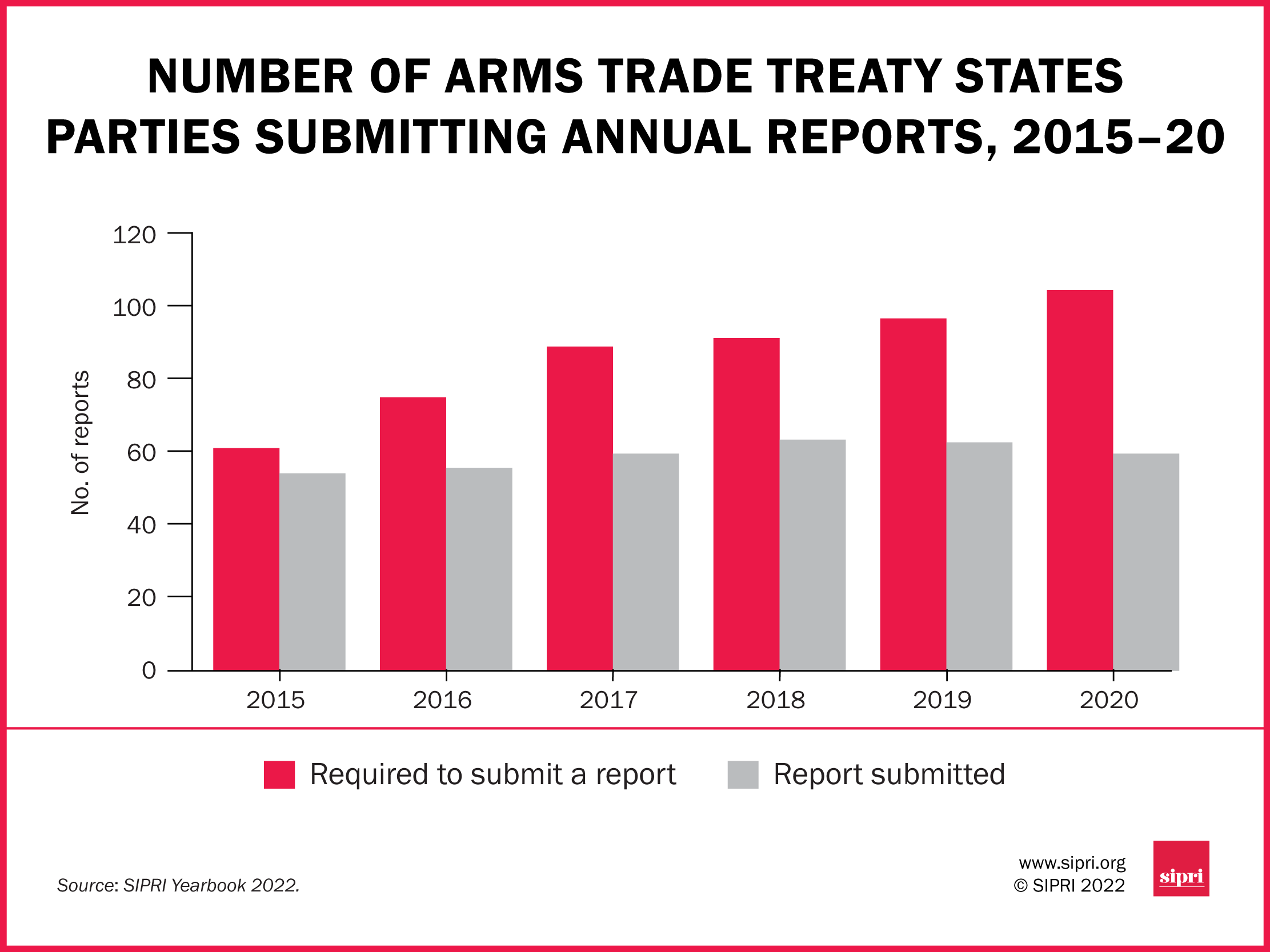14. Dual-use and arms trade controls
Overview, Mark Bromley [PDF]
I. The Arms Trade Treaty, Giovanna Maletta and Andrea Edoardo Varisco [PDF]
II. Multilateral arms embargoes, Mark Bromley and Pieter D. Wezeman [PDF]
III. The multilateral export control regimes, Kolja Brockmann [PDF]
IV. Developments in the European Union’s dual-use and arms trade controls, Mark Bromley, Kolja Brockmann and Giovanna Maletta [PDF]
During 2021, a range of global, multilateral and regional efforts sought to strengthen controls on the trade in conventional arms and dual-use items connected with conventional, chemical, biological and nuclear weapons and their delivery systems. Membership of the different international and multilateral instruments that seek to establish and promote agreed standards for the trade in arms and dual-use items remained unchanged. Under the administration of President Joe Biden, the United States engaged more fully in international and multilateral export control instruments and processes. However, tensions between the USA and China over US restrictions on transfers of dual-use items may further weaken the increasingly fragile inter-national consensus on the use of multilateral export controls as non-proliferation tools.
The Arms Trade Treaty
The Seventh Conference of States Parties to the 2013 Arms Trade Treaty (ATT) was held in a hybrid format in 2021. The thematic focus of the conference was strengthening efforts to eradicate the illicit trade in small arms and light weapons (SALW) and ensuring efficient stockpile management. Some problems that the ATT was already experiencing persisted, particularly a shortfall in compliance with mandatory reporting, a decline in the number of publicly available reports and a failure by many states parties to pay their required financial contributions. Addition-ally, restrictions related to Covid-19 meant that work in the newly established Diver-sion Information Exchange Forum could not begin.
Multilateral arms embargoes
During 2021, 13 United Nations embargoes, 21 Euro-pean Union (EU) embargoes and 1 League of Arab States embargo were in force. No new multilateral arms embargo was imposed. The level of international consensus around decisions about lifting and extending UN arms embargoes was greater in 2021 than in 2020. For example, the USA abandoned its attempt to reimpose UN sanctions on Iran; and China and Russia voted in favour of the arms embargo on South Sudan, after having previously abstained. However, reports by UN panels and groups of experts continued to document numerous violations and some states—including China and Russia—sought to block the release of certain reports or to influence the work of the panels.

Export control regimes
Restrictions related to Covid‑19 continued to affect the work of the four multilateral export control regimes—the Australia Group (AG, on chemical and biological weapons), the Missile Technology Control Regime (MTCR), the Nuclear Suppliers Group (NSG), and the Wassenaar Arrangement on Export Controls for Conventional Arms and Dual-use Goods and Technologies (WA). Only the NSG and the MTCR held annual plenary meetings, and the pandemic continued to limit decision making and discussion of political and technical topics, although small amendments were made to the control lists of the AG, the MTCR and the WA. In November 2021 China secured the narrow adoption of a resolution in the UN General Assembly First Committee that criticized the use of national and multilateral export control measures for national security purposes.
European Union controls
To implement the four export control regimes in its single market, the EU has established a common legal basis for controls on exports of dual-use items, software and technology and, to a certain degree, military items. In 2021 the new version of the EU dual-use regulation entered into force and the EU and member states began work on clarifying how it will be implemented. Members of the European Parliament also launched an initiative aimed at increasing the role of EU institutions in arms export controls. The EU and the USA deepened their cooperation on export control issues in 2021, but underlying differences both within the EU and between the EU and the USA may limit the impact of these efforts.